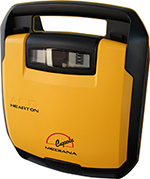Facts:
Look around the area you spend most of your time in so that you are prepared should the need arise!

- Contact your immediate – or other – responsible superior and inform them about what has happened. The Head of Department/responsible manager assesses what measures need to be taken and contacts the crisis team or SLU’s management.
-Contact SLU's communication department for help with spreading information (if neccessary).
- Contact your colleagues and students
*For students
Notify the crisis centre of SLUSS (see the telephone number on the “Crisis card”) about what has happened. SLUSS assesses what measures need to be taken.
- Contact our central environmental department.
If you see a fire, remember the following:
Evacuation routes can be found at the emergency points located around the building. Look around to make sure you know where your nearest emergency exit is located.
Assembly:
Once you have left the building, find your nearest assembly point. There is one just north of the main entrance to the VHC and one outside the Animal Hospital small animal reception.
The VHC has over 70 emergency points attached to the walls. All emergency points have a fire extinguisher and a fire blanket, while over 40 of them also have First Aid equipment. A map showing evacuation routes can also be found at each point.

Defibrillators are located in the reception area at the main entrance to building 5 and at the Animal Hospital’s receptions, one at the small animal clinic and one at the horse clinic.
There is also a defibrillator in the lunch room at the top of building 5 and one at the goods reception in the northern section of the entrance level, building 4. There is also one outside the dressing rooms outside Patologen.
If there is an emergency and someone’s heart stops, defibrillator should be used in combination with the “mouth-to-mouth” method until the emergency service arrive. The defibrillator will help you through the process step-by-step in the event of an emergency.
Look around the area you spend most of your time in so that you are prepared should the need arise!
Security Unit:
sakerhet@slu.se
Environment Unit:
miljo@slu.se
For other issues relating to security, please see the University Security information page.